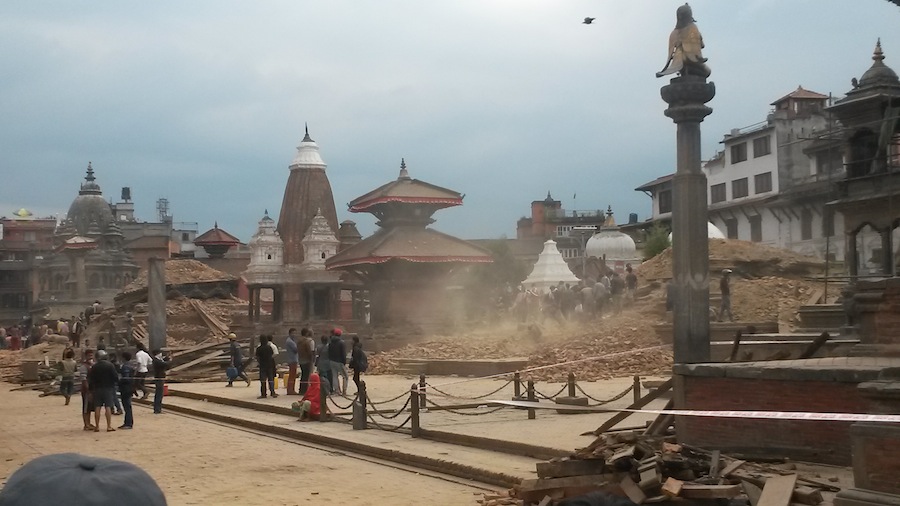Nepal Earthquake Destroys Historic Temples

The massive earthquake that killed more than 5,000 people in Nepal over the weekend also left dozens of historic buildings in ruins.
As rescue crews clear the rubble and search for victims, experts are already taking stock of the long-term cultural and architectural damage in the wake of the natural disaster.
"As we are receiving more information from the ground, I am deeply aggrieved by the magnitude of human loss caused by the earthquake in Nepal," Irina Bokova, director-general of UNESCO, said in a statement. "I am also shocked by its devastating impact on the unique cultural heritage in the country — in particular, extensive and irreversible damage at the World Heritage site of Kathmandu Valley." [Bigger Earthquake Coming on Nepal's Terrifying Faults]
Several buildings in the seven UNESCO monument zones in Kathmandu Valley — the cultural heart of Nepal — were destroyed when the 7.8-magnitude earthquake struck 50 miles (80 kilometers) northwest of the capital, Kathmandu, on Saturday (April 25). There was extensive damage to the medieval temples that line the UNESCO-designated Durbar Squares (or royal courts) of Kathmandu, Bhaktapur and Patan, making for heartbreaking before-and-after photos. The fifth-century Buddhist temple complex at Swayambhunath, west of Kathmandu, was also damaged.
One of the most prominent structures to fall in Kathmandu was the 200-foot-tall (60 meters), nine-story Dharahara Tower, built in 1832. The watchtower had recently reopened to the public, according to The New York Times, and it was filled with tourists climbing the spiral staircase at the time of the earthquake. Dozens of bodies were reportedly pulled from the wreckage. The Dharahara Tower had been rebuilt once before, after it was damaged during the magnitude-8.0 earthquake that struck on Jan. 15, 1934, and killed more than 10,000 people.
Rebuilding and restoration efforts across Nepal will be huge tasks.
"I hope to see it in my lifetime, but it is going to take a while, and that is assuming the funds are made available to Nepal, because Nepal does not have the money to do it by itself," Michael Hutt, a professor at the University of London's School of Oriental and African Studies, told The Guardian. "It is a desperate place politically: very fragile, poorly resourced and heavily dependent on international aid. The resources are not there to do this restoration work, and they are going to need a lot of help."
Sign up for the Live Science daily newsletter now
Get the world’s most fascinating discoveries delivered straight to your inbox.
A group of organizations, including the International Centre for the Study of the Preservation and Restoration of Cultural Property (ICCROM), has asked the public to help collect information on the damage through the Kathmandu Cultural Emergency Crowdmap. The interactive database is designed to compile reports and images of the damage caused to cultural heritage sites in Nepal.
Follow Megan Gannon on Twitter. Follow us @livescience, Facebook & Google+. Original article on Live Science.











